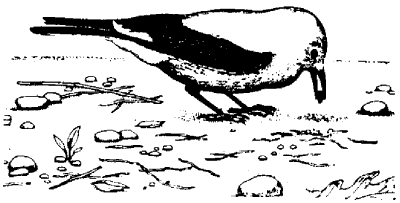 |
Science Frontiers ONLINE No. 28: Jul-Aug 1983 |
|
|
Memory in food-hoarding birds
Birds are not popularly thought to possess superlative memories, but the behavior of food-hoarding birds proves this is untrue. Several species of birds gather huge quantities of food when it is abundant and cache it for later use. On the surface this trait does not seem remarkable, but a look at the numbers of caches involved belies this superficial evaluation, especially to a species who forgot where he put the car keys a few hours ago.
Take Clark's nutcracker as an ex-ample. A bird of the U.S. Southwest, Clark's nutcracker harvests conifer seeds when in season and buries them for future use during the rest of the year. One bird may bury as many as 33,000 seeds in thousands of caches, 4-5 seeds per cache. Its memory guides it back to those caches during the next year.
(Shettleworth, Sara J.; "Memory in Food-Hoarding Birds,; Scientific American, 248:102, March 1983.)
Comment. Such capabilities should not be filed away under "Isn't nature wonderful?" or "Gee whiz!" The import of these special characteristics is suggested in a quote from the article: "... certain species have adaptive specializations that make them particularly good at learning and remembering things it is important for them to know."
